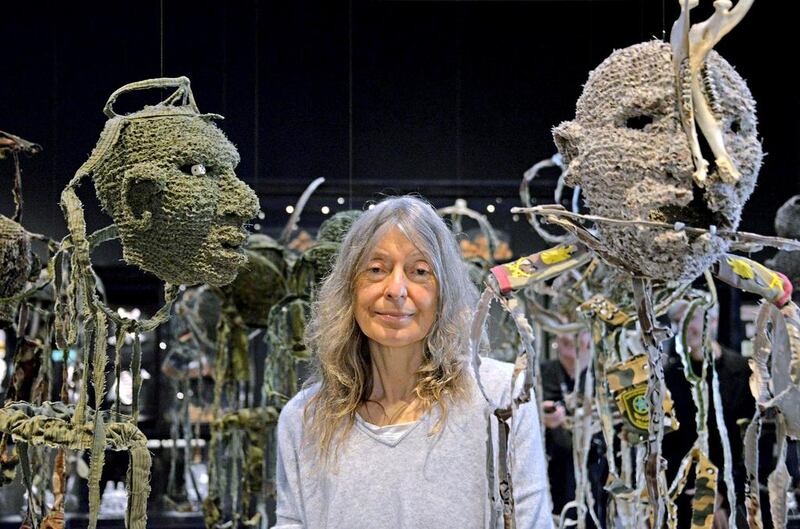As art prices surge upwards and collectors converge on Venice to buy the latest pieces on the market, the Venice Biennale, founded in 1893, offers its own contrarian view.
Das Kapital by Karl Marx will be read and performed there for the next seven months, by decree of curator Okwui Enwezor of the Haus der Kunst in Munich.
And the exhibition All the World's Futures, curated by Enwezor in the former military Arsenal and showing works by 136 artists, is a long unsettling walk that ponders contemporary tragedies – "a fresh appraisal of the relationship of art and artists to the current state of things".
Massive sculptures by Terry Adkins (1953-2014) set an ominous mood. Tangled, bust-sized knots of welded steel by Melvin Edwards hang like portraits in a long enfilade that sustains that tone.
In the Giardini della Biennale, east of the Arsenal, the severity eases a bit, although an oratorio, Das Kapital, by the British filmmaker Isaac Julien is sure to be one of the Biennial’s hottest events in the Arena, a performance space designed by the architect David Adjaye.
Nearby, the Australian Pavilion is the first new exhibition building in the Giardini in two decades. A black slab in Australian granite, designed by the Melbourne architectural firm Denton Corker Marshall, it houses an installation by Fiona Hall that includes haunting masks and a bestiary of extinct or endangered animals woven from desert grasses by Aboriginal women artists.
On the Grand Canal, in the 18th-century Palazzo Benzon, My East Is Your West is a collaboration between Indian artist Shilpa Gupta and Pakistan's Rashid Rana. The latter is displaying a wall-sized fragmentary homage to Old Master European paintings, and a room in the palazzo is set up with a live camera that connects them with a comparable room in Lahore, and to the visitors in that gallery.
artslife@thenational.ae










